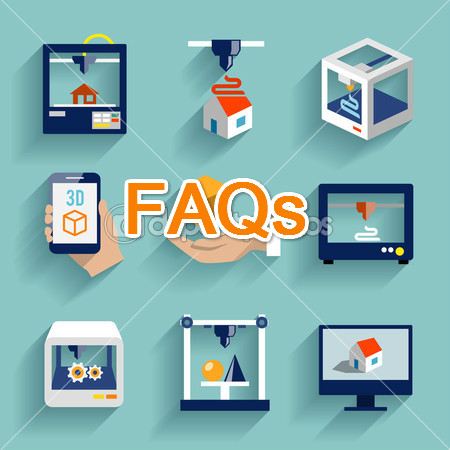3D printing ABC
hello, guys, today, we will continue the most important topic of 3D printing- the extruding part. it seems that whatever kind of 3D printer, cheap or expensive, there are always a lot of problems about the extruder and that’s really annoying. Here are some problems that we may encounter most, take a look at them, and hope they will help you deal with your printer.
1. Extruder jams with melted filament at the end of the brass barrel starts to flow backwards
Try and increase the temperature of the extruder heater. If the temperature is too low, not all the plastic can melt and only the plastic touching the barrel gets enough hot to melt and do a back flow.
2. Final printed piece have a kind of displacement on XY axis, and when I see extruder going against ooze, then it gets that XY displacement
Try to build the spring extruder, it automatically flexes when it goes against ooze or something blocking its path, and then it returns to where it should be. Alternatively, try increasing the current going through the steppers so it needs more force in order to slip.
3. The stepper motor stalls and can’t move the filament
You might try increasing the gap between the splined shaft and the tension wheel. Particularly with hard plastics like PLA, you can get problems if you try and push it though too small a hole. If the extruder design allows, using a spring to allow for varying filament sizes can work well.
4. It takes a long time after the extruder motor stops before the flow of molten plastic stops
It’s possible the temperature is too low, so the excessively viscous plastic takes too long to escape through the nozzle. Try increasing the temperature, or you can experiment with reversing the stepper instead of merely stopping it.
5. The temperature reading fluctuates by more than a few degrees, or the viscosity of the plastic appears to vary greatly.
It may well be that the thermistor/thermocouple isn’t well attached to the nozzle. Check the body of the sensor is actually touching the metal of the nozzle, and as near as possible to the tip. It’s also possible that the high currents in the heater/stepper wires are inducing a current in the sensor wires, messing with the readings. Experiment with moving the sensor wires further away to see if it helps. Finally, it’s possible the voltage across the thermocouple amp is changing, particularly if you’re powering it off the same PSU as the steppers/heaters. The 5V from an USB port is far more stable, try powering the circuit from there if you can.
6. Temperature starts out fine, but starts going down when I print, or starts going up when I print
Regenerate the g-code. The g-code contains temperature setting commands, and since these are generated when you generate the g-code, and the host doesn’t automatically regenerate the g-code, they may be out of date. The result is that the host warms the extruder up to the temperature you’ve specified, and then starts the print. The g-code then changes the temperature, and you get bad results.
7. Printed objects show brown/beige discoloration.
The temperature is probably too high, try to reduce it. If the discoloration only occurs sometimes, especially when the extruder isn’t doing much, it probably means that your temperature sensor isn’t well attached to the tip of the nozzle. It can help to put a bit of insulation around the barrel to keep the temperature a little more even if this is the case.
8. The stepper shaft grinds through the filament instead of gripping it.
Try moving the tension wheel closer to the stepper shaft, or slowing down the motor. If this happens only from time to time, it may be that your filament isn’t even enough, which can be remedied by adding springs to the tension wheel to compensate. It may also be that whatever method you’re using to add friction to the shaft (splines, teeth, gears) isn’t good enough. Cutting a worm thread with a lathe appears to be the most reliable method if you have the tools, but there are some alternatives here Pinch_wheel_variations.
9. Can I have the filament cool down inside the extruder? How do I remove it?
For most extruders, having the extruder cool down with the filament inside it is no problem at all. Just heat your extruder again to the recommended temperature for the filament, reverse extrude and gently pull on the filament to get the last bit out.
If you can add more to help other 3D printer players, welcome!

I thought this blog is telling us about 3D printers, such as its history or something else. Hope you can write something about 3D printer or provide a link.